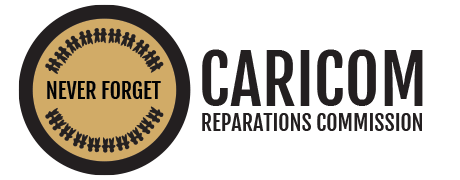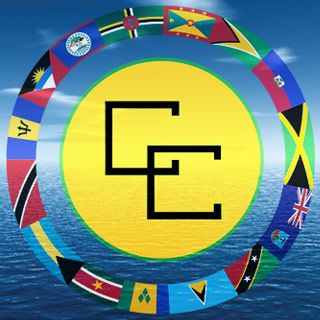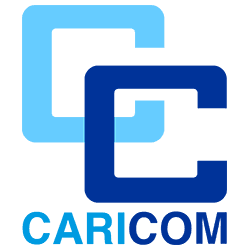By Sydney Trent (WashPost)
Daryle Williams was emotionally torn, pushing the decision right up against deadline. As a history professor at the University of Maryland, Williams had been researching the slave trade in 19th-century Brazil when he came upon two newspaper ads featuring runaway Africans. One mentioned a mother, Sancha, escaping with her two sons — Luis, 9, and Tiburcio, 4 — in 1855. The other referenced a young woman, Theresa, who fled with her nursing daughter, in 1842.
Tasked with entering his findings into what has become part of a groundbreaking new public slavery database, Williams was unsure about what to do. Should he create a separate line for the baby, even without a name?
“From one database perspective, I could have erased her” from the record, Williams said. And yet, even anonymous, the baby ”was part of the lived historical experience. … She was important for Theresa. She should be important for us as well.”
In mid-November, Williams carved out a spot — an act of hope that over time and with the labor of others, the baby’s identity might one day be revealed.
That infant girl, one tiny dot in the vast constellation of Africans swept into the transatlantic slave trade, is included in a massive project aimed at illuminating the lives of the 12.5 million Africans, and their descendants, sold into bondage across four continents.
Enslaved: Peoples of the Historic Slave Trade, a free, public clearinghouse that launched Tuesday with seven smaller, searchable databases, will for the first time allow anyone from academic historians to amateur family genealogists to search for individual enslaved people around the globe in one central online location.
It launches four centuries after the first enslaved Africans arrived on the shores of the English colony of Virginia in 1619. By then, the transatlantic slave trade was already more than a century old.
She was captured and enslaved 400 years ago. Now Angela symbolizes a brutal history.
Directed by data scientists at Michigan State University and four principal investigators, including Williams at U-Md., the project debuted with information about 500,000 named enslaved people and their circumstances, collected by some of the world’s foremost historians of slavery. More records of enslaved people, ethnic groups, populations and places will be entered over time as partnerships are forged with academics, archives, museums and other repositories of information.
As it evolves, Enslaved.org, founded with a $1.5 million grant from the Andrew W. Mellon Foundation, “will revolutionize our access to the past lives and experiences of our enslaved ancestors more dramatically and more definitively than any other research project,” said Henry Louis Gates Jr., director of the Hutchins Center for African and African American Research at Harvard University and a partner in the project.
At 88, he is a historical rarity — the living son of a slave
At a time when the United States is grappling with its slave-owning past, the project also has the potential to help the nation more fully face its history, Gates said.
“We cannot right the wrongs of the present without a fuller and deeper knowledge of the slave past, which is such an important part of American history, inextricably intertwined with the noble ideas embodied in our founding documents,” he said. “… Until now so much of the historic record has been buried or available in fragments.”
‘Several million names’
For centuries, the lived experiences of enslaved people were overshadowed by numbers: the 350-year slave trade, more than 43,000 transatlantic voyages, 12.5 million Africans forced onto European and American slave ships, only 10.8 million of whom survived the Middle Passage to arrive on foreign shores.
Brazil received the most enslaved Africans: 4.9 million. Just 388,000 arrived in North America, although by 1860 nearly 4 million lived in bondage in the United States. Human identity often took a back seat, especially in non-Catholic jurisdictions, to the monetary value and commercial description of enslaved people, found in tax registers, probate and insurance records, lawsuits, bills of sale.
There are lengthy histories of just a handful of named enslaved African Americans — think Harriet Tubman and Frederick Douglass — because the data is not organized to allow for that. Slavery historians have tended to work in silos, traveling the Atlantic world at great expense to scour records that are often poorly preserved, said Dean Rehberger, a principal investigator and director of Matrix, the Center for Digital Humanities and Social Sciences at Michigan State. Their findings are generally not broadly shared.
But in the past decade, mounting research on the slave trade and the power of technology have converged. The intersection comes amid a burgeoning public desire to understand enslaved people not as numbers but as human beings.
She was raped by the owner of a notorious slave jail. Later, she inherited it.
“We’re just at the point of recovering all these names where we can pull together several million names over the next few years. That’s going to be quite possible,” Rehberger said. “There’s millions and millions and millions more names still locked up in documents.”
The origins of Enslaved.org can be traced back several years ago to a collaboration between Walter Hawthorne, a historian of slavery at Michigan State and a principal investigator, and Gwendolyn Midlo Hall, a historian of slavery in Louisiana.
The two reached out to Williams, who like Hawthorne had developed a robust database of enslaved people in Brazil, with the idea of creating a centralized online project that would allow researchers to cross-pollinate their findings. The team brainstormed the idea with Rehberger and then discussed it with Earl Lewis, who at the time was president of the Mellon Foundation. Lewis brought Gates and David Eltis, a slave-trade historian at Emory University, on board. All along, the idea for the project grew more ambitious, adding the contributions of more scholars over time.
Enslaved.org uses a powerful database similar to those used by Wikipedia and Yelp to surface information in what is known as the Semantic Web. Through a computing technique called the “semantic triple,” the information is entered in three-part sentences, with a subject, a predicate and an object. “The simplest triple would be something like ‘Maria born 1830,’ then ‘Maria baptized 1834’ and ‘Maria married 1849,’” Rehberger said. Triples can be gleaned from any article, register or biography and then linked with other information in a sprawling network known as a “triplestore.”
A researcher can cross-reference names, places, events and dates and discover that multiple documents are referring to the same human being. Each data point tracks back to the original source, providing opportunities to learn more of the context of the enslaved person’s life.
“It’s not just about a name. It’s not just about a date. It’s not just a piece of evidence. You want people to experience the context,” Rehberger said. “It’s like all the moments in a person’s life. … You have all these little facts, and then you have to weave them together into a meaningful story.”
The ability to find names of enslaved people varies depending on where they were enslaved. The Catholics who settled in Louisiana or Brazil, for example, baptized enslaved Africans and gave them Christian names. In British colonies, where enslaved people were regarded almost entirely as property, names were less likely to be recorded. The 1870 federal census, the first after emancipation, was a boon to researchers because it was the first to have names of former slaves.
The project could also be of great value to family historians, who will be able to access the research of top scholars for free, Williams said. A digital academic journal that launched in tandem will include resources for family historians and provide peer review for academic contributions to the project. The team is exploring a partnership with FamilySearch, a free genealogy database run by the the Church of Jesus Christ of Latter-day Saints.
Even with expert knowledge of his own family tree, Gates is excited to see what more he might learn about his ancestors as new data collections move into Enslaved.org. He descends, he said, from freed slaves in Virginia and has been able to identify three sets of fourth great-grandparents. All of them lived within 30 miles of where Gates grew up in Piedmont, W.Va., which was once part of the state of Virginia.
For Gates, there’s no such thing as enough information. Soon to be part of Enslaved.org: A Library of Virginia database of tax records for more than 50,000 free Black people who lived in Virginia between 1793 and 1866. They will include information about gender, age, family, relationships and even physical descriptions, he said. And of course, Gates hopes to find out how much his ancestors paid in taxes.
“That’s gold,” he said.




